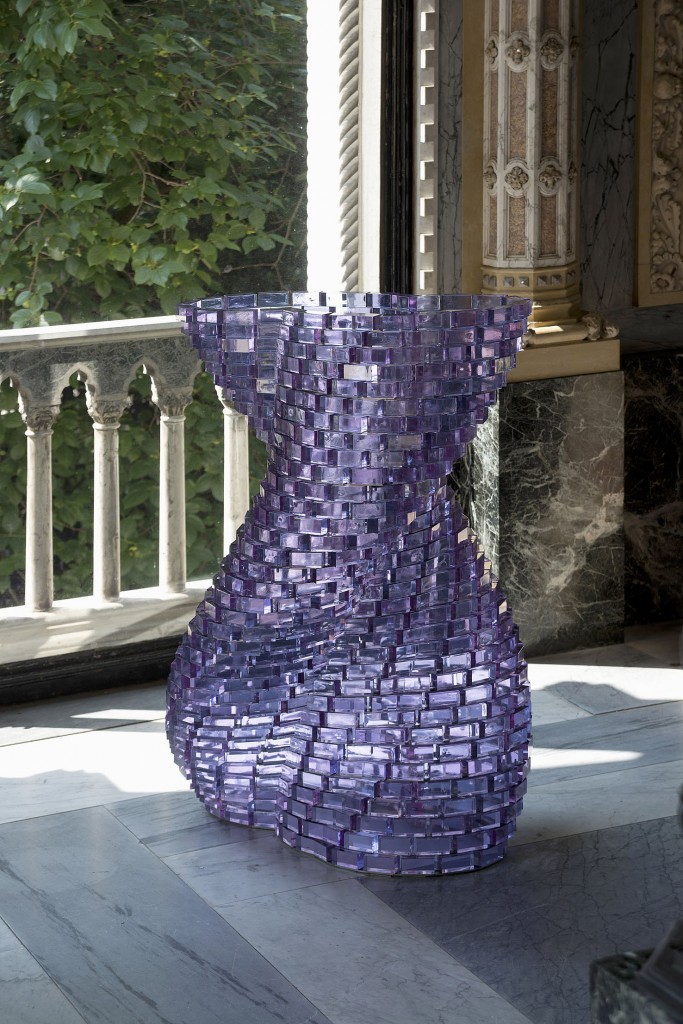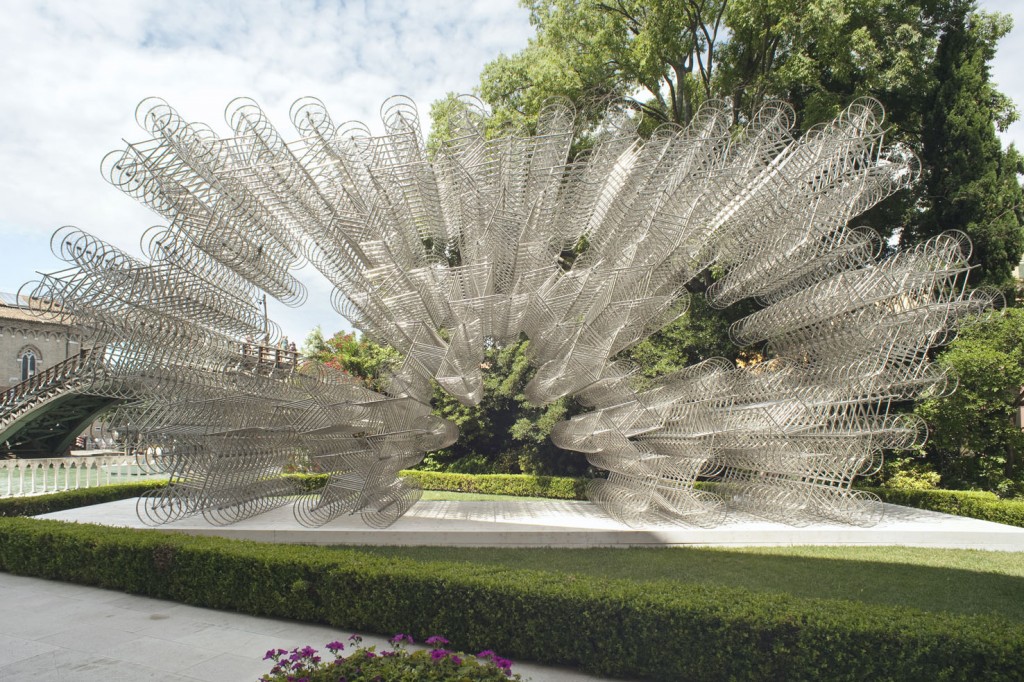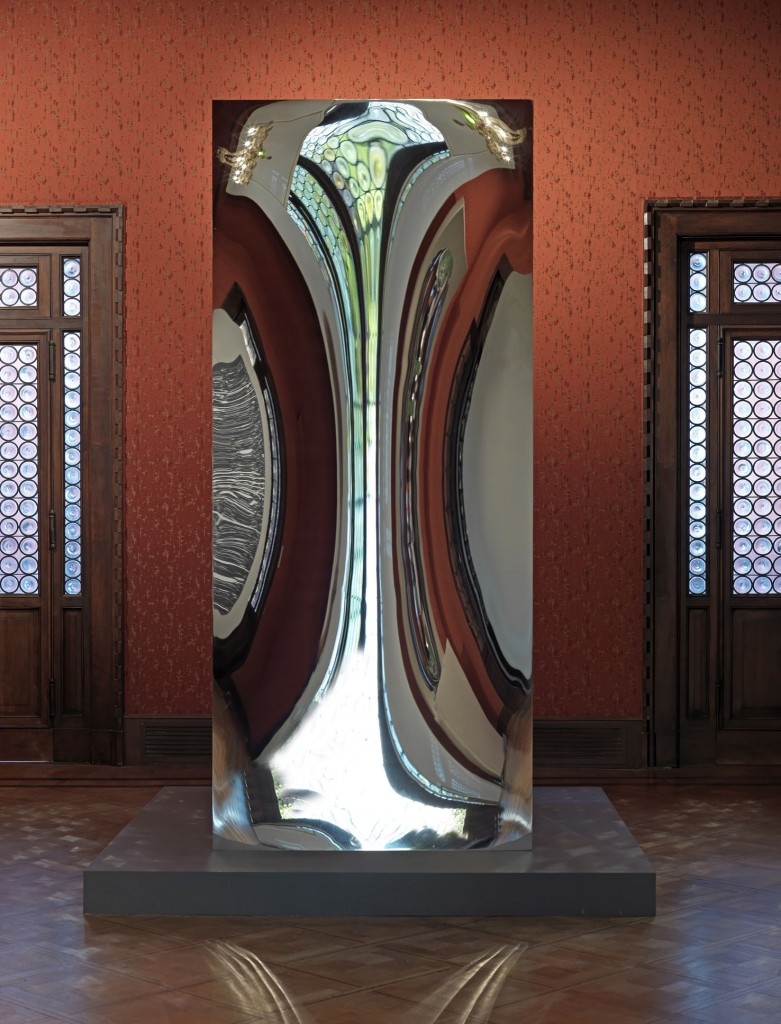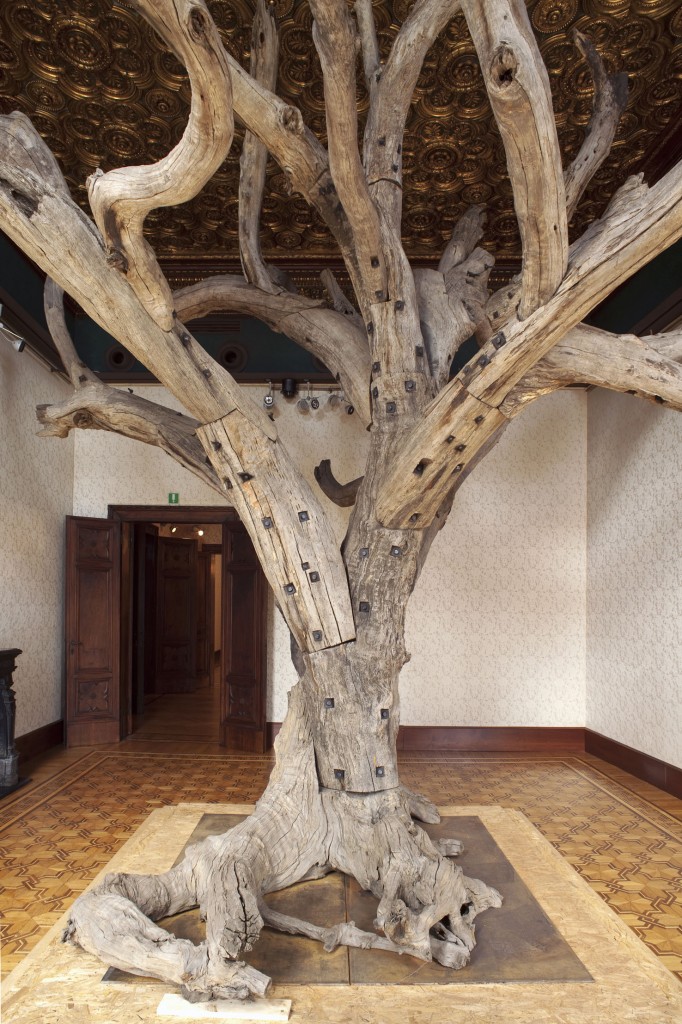Ai Weiwei, Daniel Buren, Tony Cragg, Richard Deacon, Spencer Finch, Dan Graham, Shirazeh Houshiary, Anish Kapoor, Richard Long, Tatsuo Miyajima, Julian Opie, Pedro Reyes, Santiago Sierra, Lee Ufan, Koen Vanmechelen, Joana Vasconcelos, Lawrence Weiner, Richard Wentworth
On the occasion of the 14th International Architecture Biennale in Venice, curated this year by Rem Koolhaas, the Lisson Gallery and Berengo Studio present an exhibition of sculpture and installation that goes beyond the museum or gallery space, addressing instead the complex spheres of the public realm and the built environment. By existing beyond the walls, public art can help define the character of its location, either functioning harmoniously or in dialogue with the architecture or landscape it inhabits. As experienced commissioners of large-scale contemporary art, curators from the Lisson Gallery, in association with Berengo Studio, are displaying a range of major pieces by 19 artists, both inside and outside the historic Venetian Palazzo Franchetti. The show includes models, sculptures, drawings and projects by Anish Kapoor, Ai Weiwei, Daniel Buren, Lawrence Weiner, Shirazeh Houshiary and Lee Ufan, among others, all of whom have made significant contributions to art in the public domain through works that challenge, complement or elucidate their surroundings. In turn, these proposals, situations and sculptures – some unrealised, some temporary, some permanent – should allow us to better appreciate, contemplate and understand the world around us.
The title is taken from the Latin term genius loci, used to describe the particular essence or spirit of a place. For a work of art to attain this status, it might evoke the atmosphere of landscape, as in Richard Long’s works made with clay collected from a riverbank. Conversely, the interconnected LED counters and circuits in Tatsuo Miyajima’s installation reflect our increasingly digitised, networked existences. Public works of art can also mirror the civic and architectural structures found in cities: Dan Graham’s glass and steel pavilions, reminiscent both of skyscrapers and closed-circuit surveillance rooms, engage people who may pass near or through, their bodies being at once removed and reaffirmed in the two-way mirrored glass. The colourful, canopied walkways and striped interventions of Daniel Buren, whose pergolas provide shelter and an alternate entrance to this exhibition, similarly exist somewhere between artifice and architecture, situation and experience. Visitors will also be drawn in by the monumental stack of conjoined stainless steel bicycles by Ai Weiwei that rise from the garden overlooking Venice’s famous Accademia bridge.































































